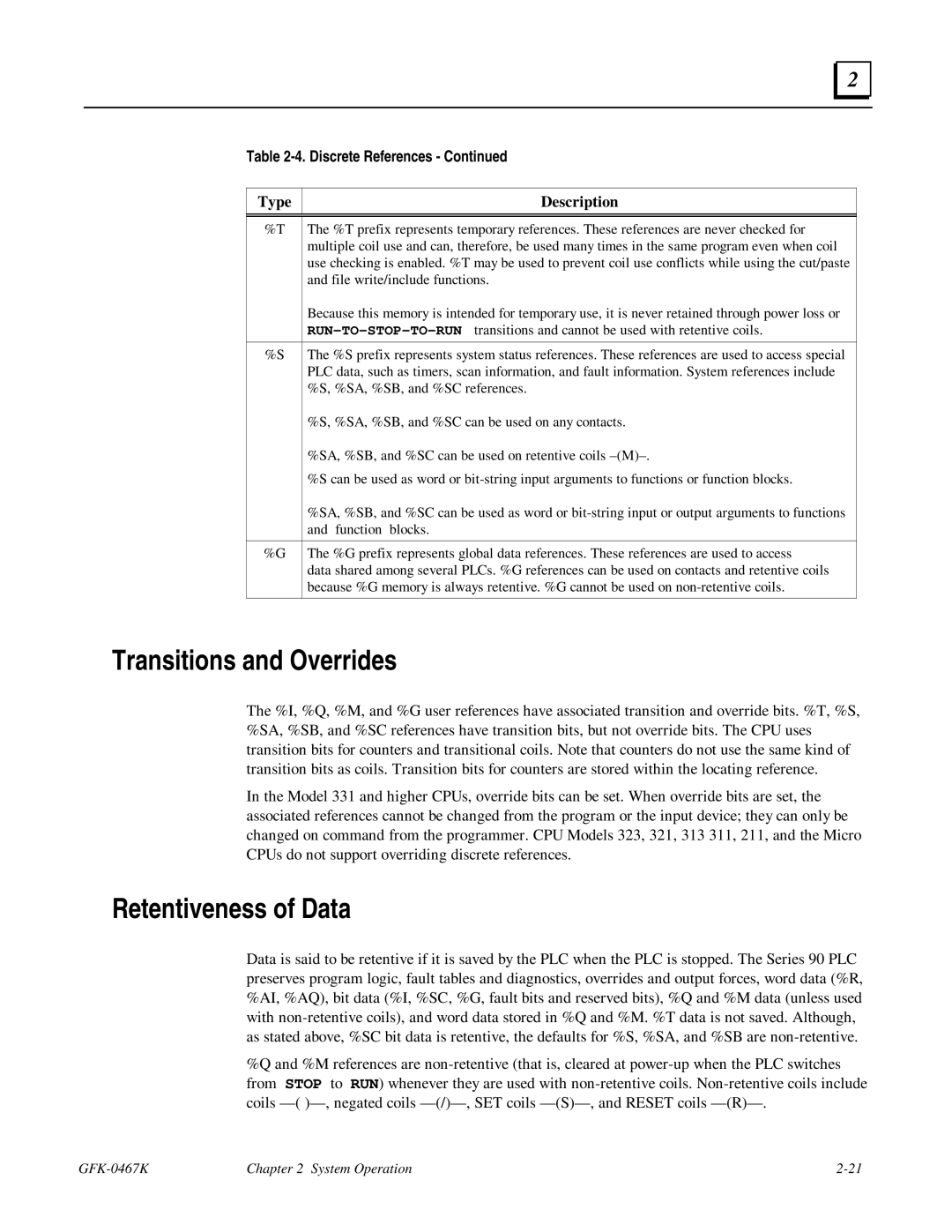2 |
Table 2-4. Discrete References - Continued
Type | Description |
|
|
|
|
%T | The %T prefix represents temporary references. These references are never checked for |
| multiple coil use and can, therefore, be used many times in the same program even when coil |
| use checking is enabled. %T may be used to prevent coil use conflicts while using the cut/paste |
| and file write/include functions. |
| Because this memory is intended for temporary use, it is never retained through power loss or |
| |
|
|
%S | The %S prefix represents system status references. These references are used to access special |
| PLC data, such as timers, scan information, and fault information. System references include |
| %S, %SA, %SB, and %SC references. |
| %S, %SA, %SB, and %SC can be used on any contacts. |
| %SA, %SB, and %SC can be used on retentive coils |
| %S can be used as word or |
| %SA, %SB, and %SC can be used as word or |
| and function blocks. |
|
|
%G | The %G prefix represents global data references. These references are used to access |
| data shared among several PLCs. %G references can be used on contacts and retentive coils |
| because %G memory is always retentive. %G cannot be used on |
|
|
Transitions and Overrides
The %I, %Q, %M, and %G user references have associated transition and override bits. %T, %S, %SA, %SB, and %SC references have transition bits, but not override bits. The CPU uses transition bits for counters and transitional coils. Note that counters do not use the same kind of transition bits as coils. Transition bits for counters are stored within the locating reference.
In the Model 331 and higher CPUs, override bits can be set. When override bits are set, the associated references cannot be changed from the program or the input device; they can only be changed on command from the programmer. CPU Models 323, 321, 313 311, 211, and the Micro CPUs do not support overriding discrete references.
Retentiveness of Data
Data is said to be retentive if it is saved by the PLC when the PLC is stopped. The Series 90 PLC preserves program logic, fault tables and diagnostics, overrides and output forces, word data (%R, %AI, %AQ), bit data (%I, %SC, %G, fault bits and reserved bits), %Q and %M data (unless used with
%Q and %M references are
| Chapter 2 System Operation |
